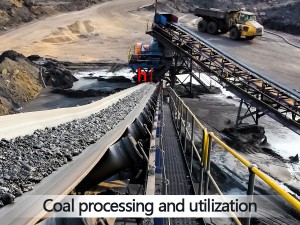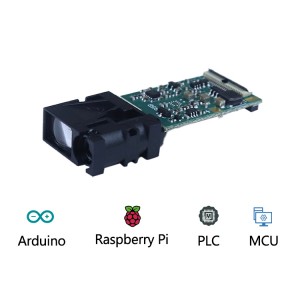Coal Processing And Utilization Laser Height Measurement Sensor
In the context of coal processing and utilization, laser height measurement sensor plays a crucial role in various stages, from raw material handling to the final product. These laser distance measurement sensor is used for precise and reliable measurement of the height or level of materials, which is essential for efficient process control and automation. Here’s an overview of laser distance measurement sensor:
Raw Material Handling
1. Stockpile Management: Laser height sensor can be used to measure the volume of coal stockpiles. This helps in inventory management and ensures that the stockpile levels are maintained within safe and operational limits.
2. Belt Conveyors: On conveyor belts, the laser distance sensor can monitor the height of the coal to ensure that the belt is not overloaded, which could lead to spillage or equipment damage.
Crushing and Screening
1. Feeder Control: In the crushing and screening processes, laser height measurement sensor can be used to control the feed rate of coal into crushers and screens. This ensures a consistent and optimal flow of material, improving efficiency and reducing wear on equipment.
2. Bin Level Monitoring: Laser measurement sensor can be installed in bins and hoppers to monitor the level of coal, ensuring that they do not overflow or run empty, which could disrupt the process.
Washing and Beneficiation
1. Density Control: In coal washing plants, laser height sensors can be used to monitor the level of coal slurry in tanks. This is important for maintaining the correct density and consistency of the slurry, which affects the separation efficiency.
2. Settling Tanks: In settling tanks, these distance measurement sensors can help in monitoring the interface between the settled solids and the supernatant liquid, ensuring proper separation and dewatering.
Pulverization and Combustion
1. Mill Feeding: In coal pulverizers, laser length measurement sensor can be used to control the feed rate of coal into the mill, ensuring that the mill operates at its optimal capacity without overloading.
2. Boiler Feeders: In power plants, these laser measuring sensors can be used to monitor the level of coal in the boiler feeders, ensuring a steady and controlled supply of coal to the burners.
Quality Control and Safety
1. Level Detection: Laser ranging sensors can be used to detect the level of coal in various storage and processing units, helping to prevent overfilling and ensuring safety.
2. Process Monitoring: Continuous monitoring of material levels can provide real-time data for process optimization and quality control, helping to maintain consistent product quality.
Key Features of Laser Height Measurement Sensors
1. High Accuracy: Laser distance sensor offers high precision and accuracy, making them suitable for applications where exact measurements are critical.
2. Non-Contact Measurement: They operate without physical contact with the material, reducing the risk of contamination and wear.
3. Wide Range: The laser distance measurement sensor can measure a wide range of heights, making them versatile for different applications.
4. Rugged Design: Many laser rangefinder sensors are designed to withstand harsh industrial environments, including dust, moisture, and temperature variations.
5. Integration Capabilities: They can be easily integrated into existing control systems, providing seamless data for process control and automation.
Laser height measurement sensor is indispensable tools in the coal processing and utilization industry. Laser length measurement sensor provide accurate and reliable measurements, enabling efficient and safe operation of various processes. By integrating the laser distance measurement sensor into the workflow, operators can optimize their operations, reduce downtime, and improve overall productivity.
Post time: Jun-19-2025







